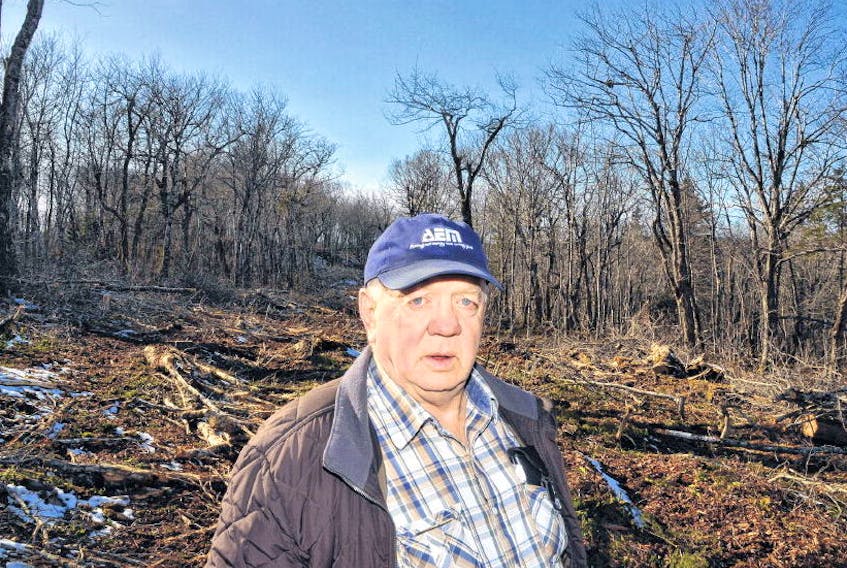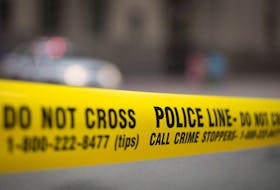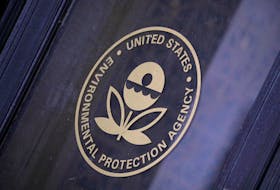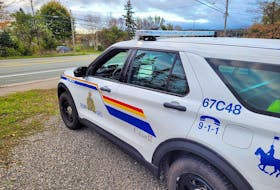Department of Natural Resources staff did not visit an area of old hardwood in Guysborough County before it was harvested by Port Hawkesbury Paper.
They are only mandated to visit 10 per cent of sites in eastern Nova Scotia before a cut takes place and then assess about 25 per cent of cuts afterwards.
After allegations by local harvester Danny George that the mill was cutting old-growth stands to supply the Nova Scotia Power biomass plant located next to Port Hawkesbury Paper, the department sent its old forest specialist to assess the area that was cut.
“We don’t believe (it was old growth), nothing indicated it initially,” said Ryan McIntyre, manager of forest management planning for the provincial department, on Friday. “. . . Where it’s a partial harvest, (the old-growth forester and regional forester) can go to the residual areas that weren’t treated and assess those.”
However, he said they wouldn’t know before the results of the assessment conducted by the old forest specialist are available.
According to a document provided by Port Hawkesbury Paper, of the hardwood it has cut in the area of the Loon Lake Road, 73 per cent went for fuel wood (biomass), 11 per cent for firewood, eight per cent for hardwood pulp, six per cent for saw logs and a very small amount to make pallets.
None of that sits well with Scott Cook.
Cook ran a sawmill in Guysborough for 35 years, having taken over from his father and grandfather, who ran sawmills in the area since 1922.
“The area’s never been cut, so I don’t see what else it would be but old growth,” said Cook, standing in one of the areas near Loon Lake cut by the mill.
“I’d like to have someone
here from DNR ask them, if this isn’t old growth then what is? And they’re cutting it for biomass.”
DNR leases all the Crown land in seven of the province’s eastern counties to Port Hawkesbury Paper under a deal that was signed with the mill’s new owners in 2012.
Under that deal, the mill manages the land instead of the province.
The mill also provides Nova Scotia Power with most of the wood burned in its biomass boiler. Though much of that is bark and mill waste from around the province, wood also has to be cut to feed the boiler, which has been running heavily through the winter to generate electricity at a time of high energy prices.
Mill staff or contractors hired by the mill do what are called pre-treatment assessments on each area they want to cut and send them to the Department of Natural Resources.
“From the pre-treatment assesments we do at the site, if the stand should be harvested under the selection system we take a third of volume,” said mill manager Marc Dube in an interview with The Chronicle Herald last week.
“We don’t clearcut shade-tolerant hardwood stands . . . the hardwood stands are managed for the forest ecosystem.”
The cuts in the hardwood of the Loon Lake Road weren’t clearcuts but rather circles or swaths about 45-60 metres across. There were softwood stands that had been clearcut — though that doesn’t concern George or Cook, who agreed that they were low-grade wood.
The technicians paid by the mill are trained and certified in doing pre-treatment assessments by the Department of Natural Resources.
Department staff review the submitted plan, comparing it to a computer model of the province’s forest that accounts for such things as soil type, biodiversity, and understory vegetation.
In the case of the cutting around Loon Lake, that computer model said the area Port Hawkesbury Paper cut wasn’t old growth.
Asked if that model could have been wrong, McIntyre said, “If you dug deep into anything you can probably find errors. It’s just a tool at a high level and then you go to the ground.”
While the department is mandated to visit 10 per cent of the areas proposed to be cut by Port Hawkesbury Paper, McIntyre said staff visit at least 25 per cent of the areas cut afterwards to ensure the paper mill was in compliance with its own pre-treatment assessment.
McIntyre said he “couldn’t speak to” whether the mill gets fined if it’s found to be in violation of that pre-treatment assessment.
Some of the areas that were cut did not appear on the province’s harvest plans map that allows the public to see which areas are proposed for cutting so the public can then send comments or concerns to Department of Natural Resources staff.
McIntyre said the cuts were done on an old permit that predated the online mapping system unveiled 18 months ago.
Areas flagged to be cut in the vicinity of Lawlor Lake and Rocky Lake also don’t appear on the province’s online harvesting tool — they also fall under the old licence.
According to Port Hawkesbury Paper, it has cut 81 hectares of hardwood over recent months in the area and has 40 hectares left to cut.
“The area just east of Rocky Lake is about 40 acres and it’s old growth,” said George, who works as a selective harvester of hardwood off private lands.
“It would be one of the best examples of old growth you’ve seen.”
Cutting has ceased in the area for a month or more as warmer temperatures have made the roads too soft.









